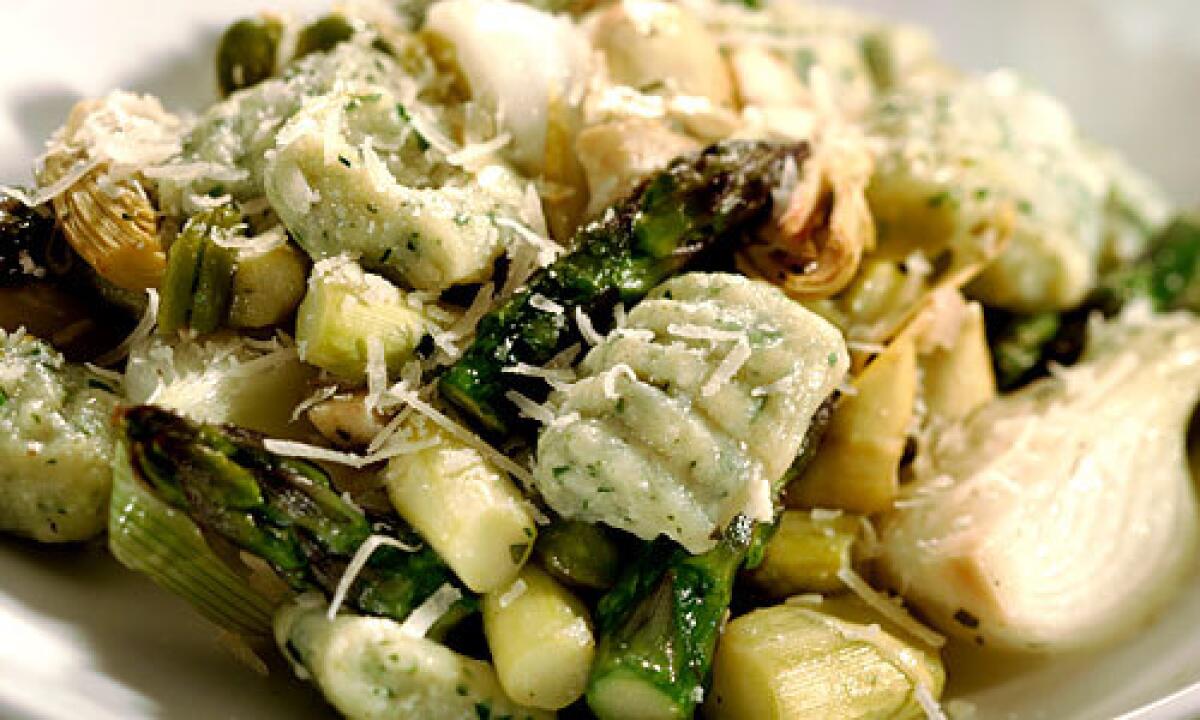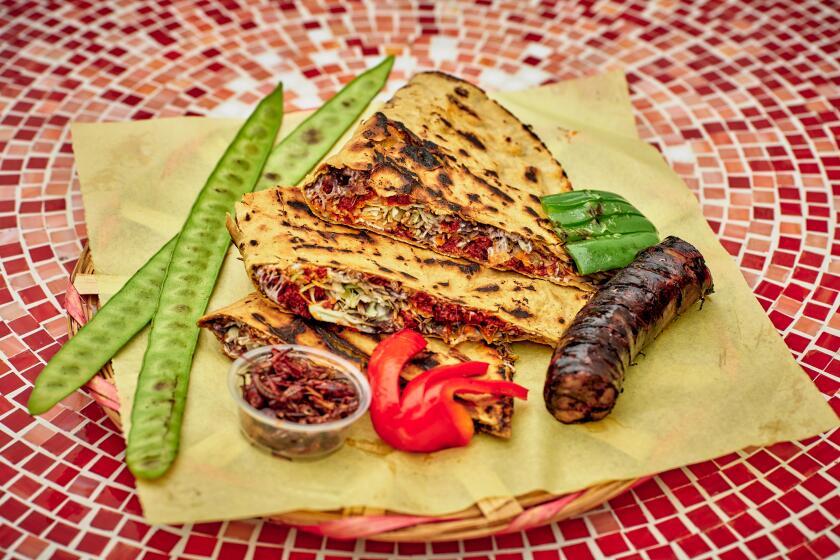How to cook with farmers market produce

Go to a farmers market and your mind begins to race. Fava beans? What can I do with them? What about the asparagus? And look at those artichokes! Strawberries, mmmm. There are so many terrific ingredients just begging for you to buy them at this time of year that it can seem impossible to decide what to cook.
Some people try to solve the problem by eliminating impulse altogether and shopping strictly from recipes -- they’ll print out their favorites and then follow the ingredients list to a “T,” regardless of what might be best that particular day. Others go the opposite direction -- they’ll buy up everything they see and then when they get home spend the afternoon searching through cookbooks to find recipes to use it all up.
All about improv
Either approach is bound to be frustrating. When it comes to cooking from the farmers market, recipes are the enemy. Improvisation is everything.
That may seem funny coming from someone who writes recipes for a living. (And, have no fear, there are recipes with this article too!) Perhaps a more accurate way to put it is that the real problem with recipes is a slavish devotion to them.
Cooking from the farmers market is a bit like playing jazz (or so it seems to this tone-deaf, beat-deprived fan). Shopping straight from the recipe is like playing sheet music -- it might be acceptable, but it’ll never be much more. On the other hand, buying up everything that looks good and hoping to find the recipe later is like one of those bebop players who throws out a gazillion notes in hopes of stringing together two or three that make a melody.
But to improvise successfully you still need a basic structure. Not one so rigid that you wind up hamstrung, but more like a theme that allows for variation -- general ideas you can go back to again and again, varying them to fit your mood, the season and what seems best.
Something like a vegetable stew, for example. Braise whatever vegetables you like with white wine and either a light chicken stock or just plain water. It won’t take much -- probably three-fourths of a cup or less. When the vegetables are tender, raise the heat to reduce the liquid to a glaze.
The real art isn’t how it’s constructed, but what ingredients you choose and in what proportions. The technique just gives you a structure you can depend on.
Think about what flavors go together. Frequently -- but not always -- things that share seasons also share complementary tastes. For example, at this time of year, you might want to make the stew with asparagus or artichokes or fava beans . . . or maybe all three.
But even though they’re plentiful in the market right now, you probably wouldn’t want to add chard, kale or other braising greens. The flavors just wouldn’t work together. Or maybe they would? You’re the cook, you decide.
To make the stew into a main course, you could throw in some cooked dried pasta. But I’ve fallen in love with ricotta gnocchi. Making it is basically no harder than beating together well-drained ricotta, Parmigiano-Reggiano and eggs and then kneading in enough flour to make a soft dough. Vary the amount of the cheese as you like, and you can add chopped herbs if you like. The main tricks are not adding too much flour and not overworking the dough -- either one will make the gnocchi rubbery.
Once you have the structure well in hand, you might think a little bit about other auxiliary flavor riffs you might want to use. Staying with the artichoke, asparagus and fava bean theme, maybe some shredded basil right at the end? Or a little tarragon? Chervil?
And then there’s the choice of cheese: Nutty Parmigiano-Reggiano is a natural, but you could push the envelope a little by trying pungent pecorino Romano, or maybe a milky-salty ricotta salata.
Before you commit with the whole dish, scoop up a little in a spoon and taste it with just a little bit of the herb or cheese you’re thinking about adding. If it works, you can add more.
Crostata variations
This idea of riffing on a basic structure works just as well -- if not better -- with fruit. As far as I’m concerned, a good crostata dough is the culinary equivalent of Archimedes’ lever: Given one, you can move the world.
My favorite crostata dough is one I learned years ago from Nancy Silverton. She uses a mix of three-fourths cup bread flour and 1 1/2 cups cake flour to get a combination of flaky structure and tender crumb. Because I’m usually short of bread flour, I generally mix three-fourths cup cake flour and 1 1/2 cups all-purpose and that works almost as well. Or you can go with only all-purpose if you like; it’ll be good but not quite as tender.
Roll out the dough (not too thin; it should have some heft) and put it on a cookie sheet. Heap cut-up fruit in the middle; it’ll take about 3 cups, sweetened with a couple of tablespoons of sugar, plus about a tablespoon of cornstarch to thicken the juices.
Fold over the edges of the dough -- it should be neat, but not too neat -- and then bake in a hot oven until the crust is crisp and brown.
Serve this with vanilla ice cream and see if your world doesn’t move too.
More to Read
Eat your way across L.A.
Get our weekly Tasting Notes newsletter for reviews, news and more.
You may occasionally receive promotional content from the Los Angeles Times.











